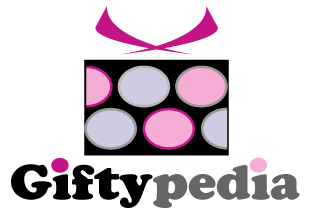Celebrating Easter
From Giftypedia
Rooted in ancient tradition and centered on church services, Easter is primarily a Christian religious festival. Easter is preceded by the 40-day period of Lent. Lent begins on Ash Wednesday. The day before Ash Wednesday is celebrated in some regions as Carnival or Mardi Gras (Fat Tuesday). The Christian festival of Easter embodies a number of converging traditions. However, many of the familiar customs of the season have more to do with the beginning of Spring [1] that have come from traditions from long ago, and have since been commercialized.
The Easter Egg
Eggs of all sorts are dyed, painted and adorned to celebrate this holiday. The egg is known as a symbol of fertility and new life and the bright colors that eggs are frequently decorated symbolize the sunlight of spring.
The Easter Bunny
The rabbit is also a symbol of the Easter holiday. It is said that rabbits are a symbol of fertility.
The Easter Lily
For many, White Easter Lilies are a symbol of the Resurrection. Its beautiful trumpet-shaped blossoms symbolize purity, hope, life, and all the promises of Spring.
Traditions of Easter

|

|
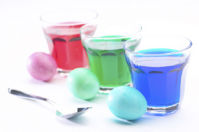
|
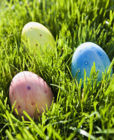
|
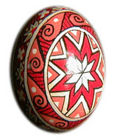
|
Easter Baskets
Traditionally a woven basket, now these baskets include plush animal shapes or buckets. Easter Baskets usually include sweets, especially chocolate shaped bunnies, marshmallows in shapes like bunnies or chicks, and egg-shape candy or candy inside or egg-shaped containers.
The Easter Parade
Another Easter tradition is the Easter Parade. In the Wild West days, the parade was to show off their new clothes and mostly their new spring bonnets. Today, one of the most popular Easter Parades is in New York city where people wander along 5th Avenue showing off their Easter outfits and yes, their Easter Bonnets.
Dyeing or Decorating Eggs
The Easter Egg predates the Christian holiday of Easter. The exchange of eggs in the springtime is a custom that was centuries old when Easter was first celebrated by Christians. Today, the eggs are dyed in brilliant colors.
In Greece the Easter Eggs are dyed red. The egg is a symbol of the renewal of life, and the message of the red egg is victory over death. A game is also played using the eggs at the traditional meal to break the fast. Before the eggs are eaten you tap the end of your egg on your opponents egg trying to crack it. This game is played by adults and children.
Ukrainian Easter Eggs, or pysanky[2], are an Eastern European art of egg decorating. The designs are drawn onto the egg using a stylus with melted beeswax and dipped in successive dye baths. In pre-Christian days they were used to ward off evil.
Easter Egg Hunt and Easter Egg Roll
In the German holiday tradition, German tales tell of an Easter Hare that laid eggs for the children to find. German immigrants brought this tale to America which today is the Easter Egg Hunt.
Some people prefer to hide plastic eggs filled with treats instead of the traditional boiled eggs. Ideas for filling plastic eggs for the hunt include jelly beans, coins, wrapped Easter candy, temporary tattoos, Easter or Spring Stickers, and small plastic toys.
Rolling eggs on the Monday after Easter was a tradition observed by many Washington families. The first White House Easter Egg Roll was held in 1878.
The Easter Bunny
In many U.S. households, the Easter Bunny will visit during the night and leave a basket filled with candy and treats for the kids. Many times, the Easter Bunny will also hide the basket for the children to find, or will hide Easter Eggs for a Easter egg hunt.
The Easter Witch
Children in Sweden dress up as witches on Easter, a tradition that pre-dates Christianity. Folklore states that witches flew off on broomsticks to meet and dance with the devil at Blåkulla mountain.
Easter Celebrations
In Chile and many parts of South America and Australia, Easter is celebrated as a whole week, which begins on Palm Sunday and goes through Easter Sunday. In Hungary many people also celebrate Easter Monday, which is the Monday after Easter, by carrying on the tradition called "sprinkling". The tradition in the past would involve young men pouring buckets of water over young women's heads, but today the men will spray perfume or water, ask for a kiss and a red egg.
Easter, a time to celebrate the coming of spring.
Gifts For Easter
Religious centered gifts with Easter themes of the Resurrection of Christ, Easter Lilies, Lent, crosses and other Christian religious symbols.
Spring themed items like Easter Baskets with candy, plush bunnies or other cute animals like ducks or chicks, and colored eggs.
Related Guides
References
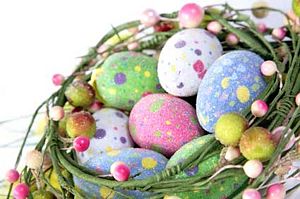
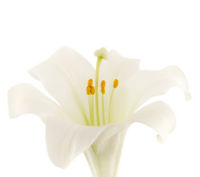

 Printer Friendly
Printer Friendly
